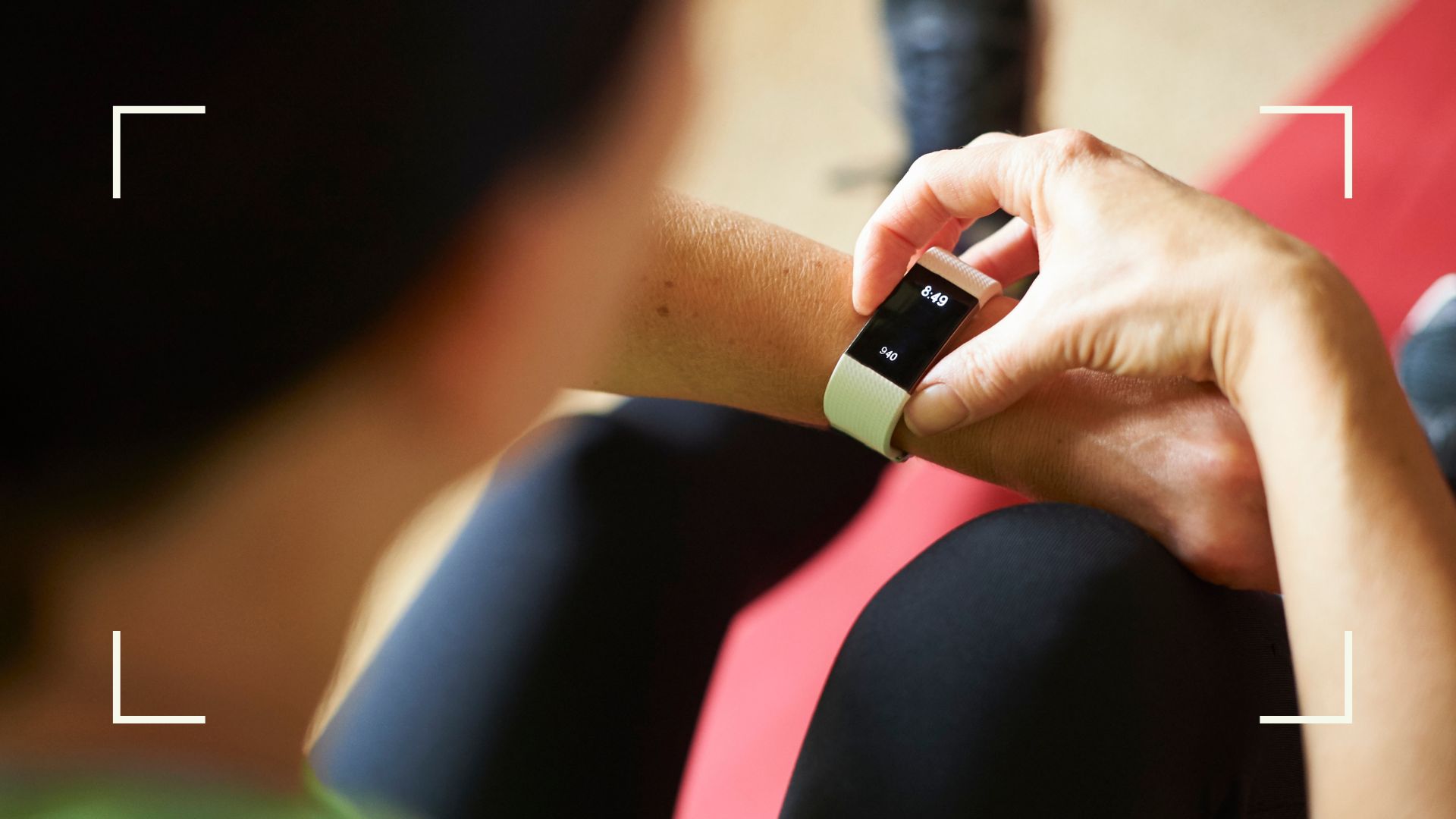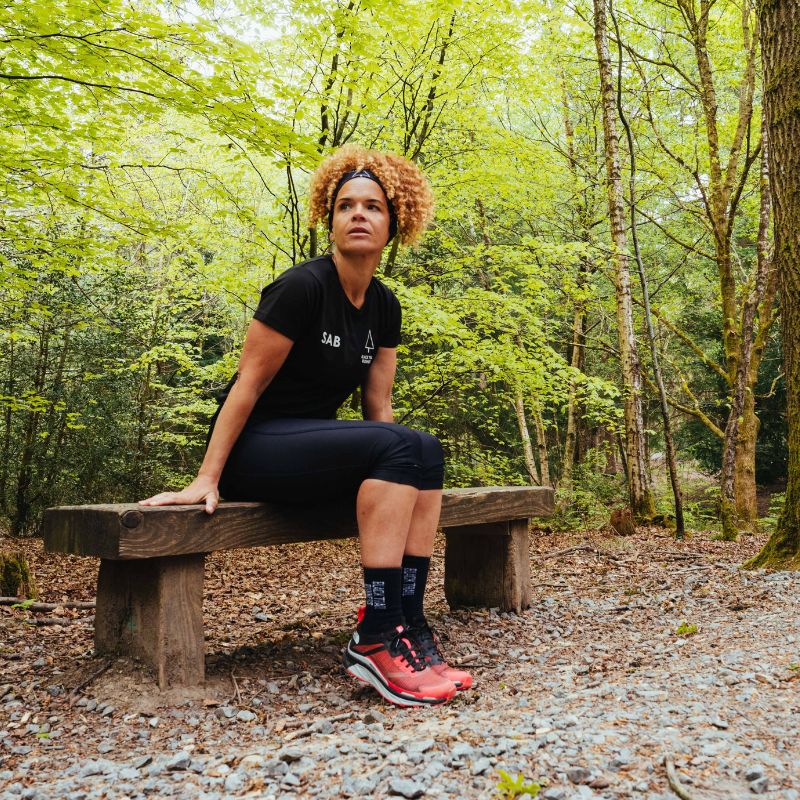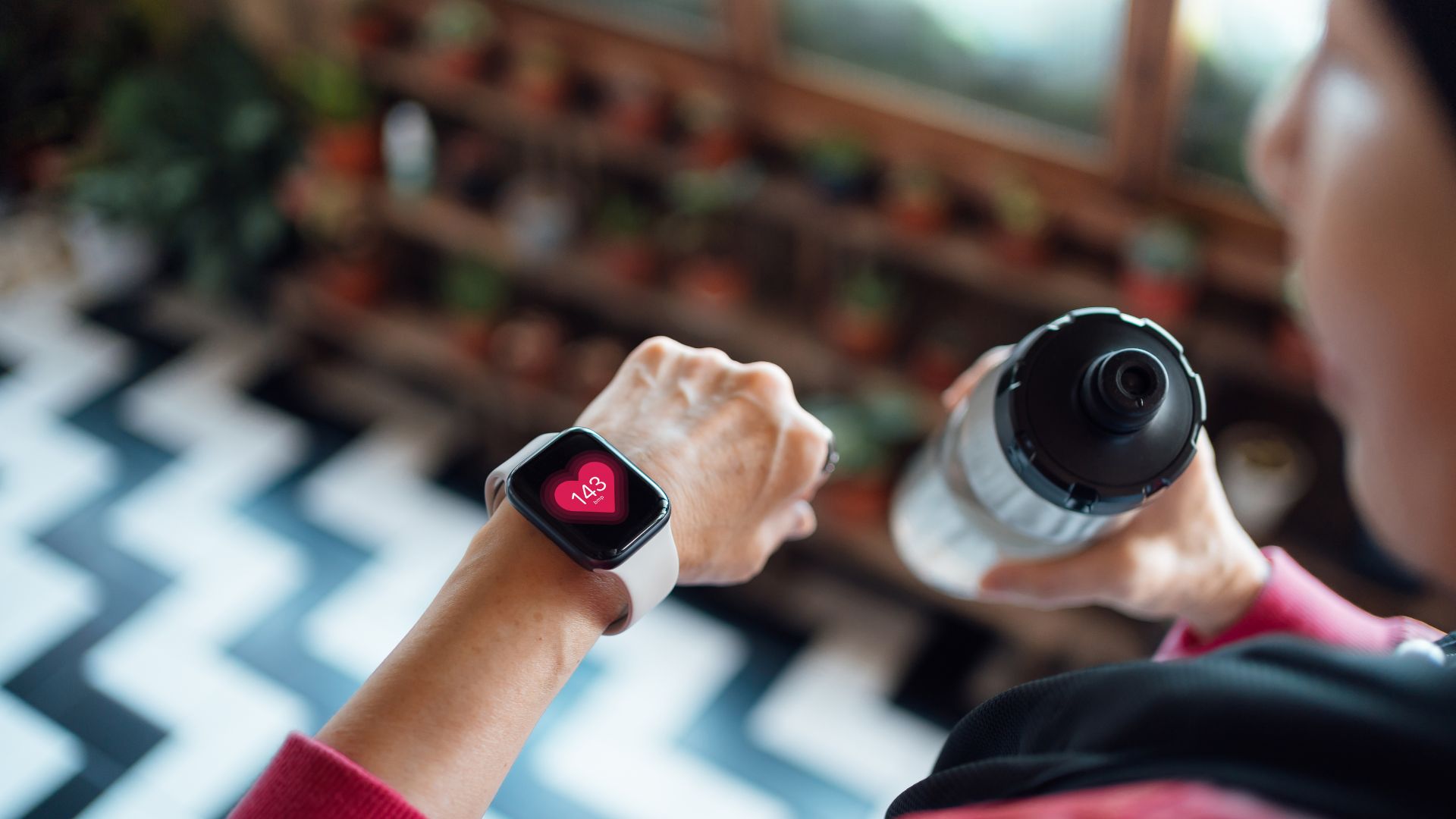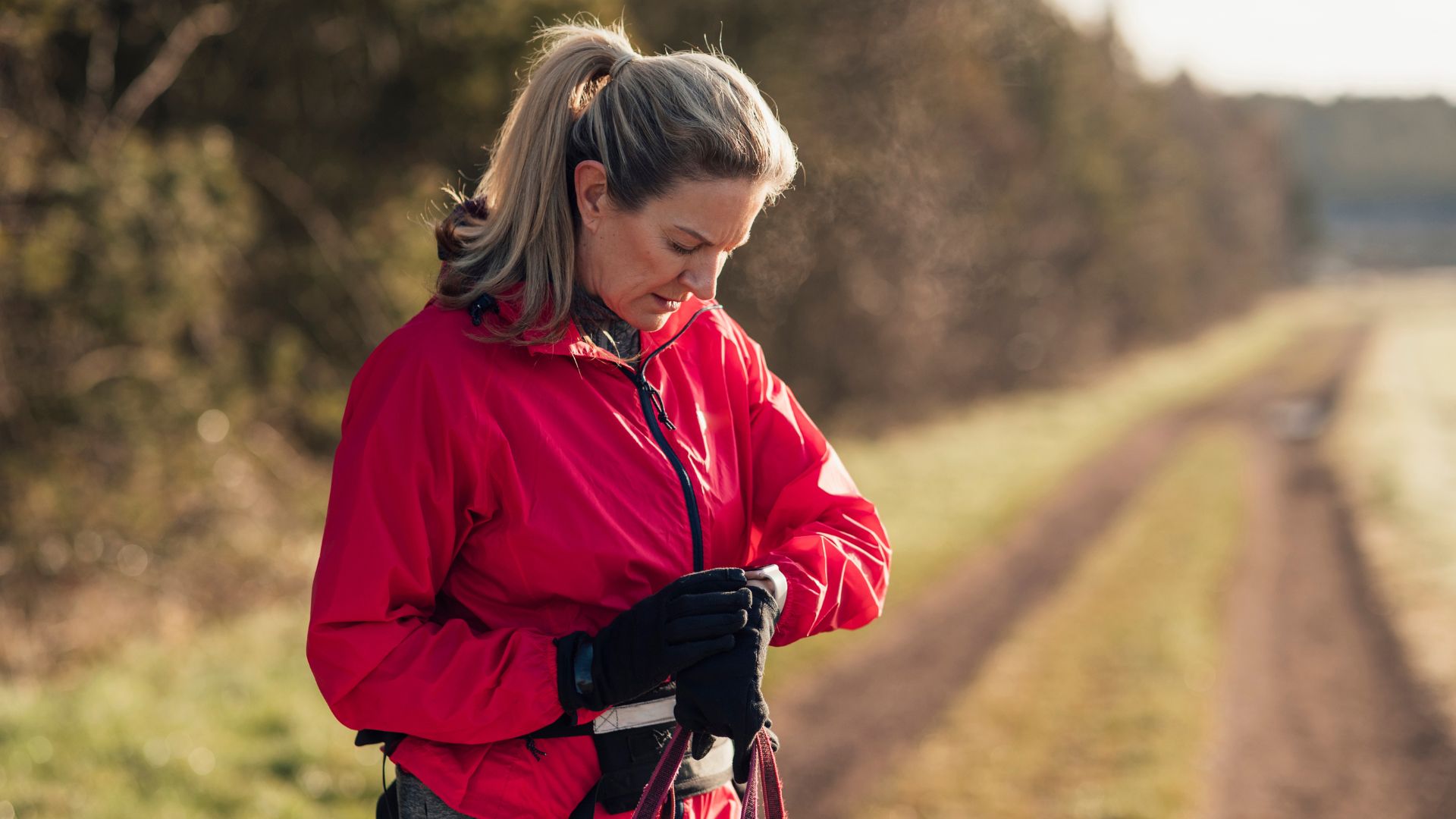'What I wish I had known before buying a fitness tracker' as revealed by 5 health experts
From personal trainers to product designers, experts reveal the key features to look for when buying a fitness tracker, no matter the brand


Whether you're looking to improve your fitness, get more sleep, or just understand the way your body works a little better, a fitness tracker can help by delivering unique and useful insights into your personal routine.
Knowing the right one to buy can be a challenge, however. There are so many options out there, ranging from budget buys that cover the essentials to advanced technologies in sleek designs.
As the health editor at woman&home, I've tried and tested a huge range of the best fitness trackers in my time across a range of activities, from running to paddleboarding. I've scoured through the best Fitbits, the best Garmin and Polar watches, the newest Apple Watches, and many other brands' offerings over the years, bringing together a regularly changing list of favourites.
Here, with the help of personal trainers - who use these trackers every day themselves and with clients - and product designers who work to help create these devices, I reveal the features (and the models) worth having, to help you find your perfect smartwatch in all the deals out there.
What you need to know before buying a fitness tracker
Are looking to improve your fitness? Boost your step count? Establish a more consistent workout and sleep routine? Reduce stress? Work out at home? These days, with all the advancements in the last 10 years, fitness trackers can help with it all. It's almost easier to list the things these devices can't do because, apart from the workout itself, it's not a lot.
Given the extensive range of sensors available on fitness trackers and the ever-growing interest in 'hacking' our wellness routines for better long-term health, it's no surprise that the interest in these watches and other devices continues to grow. It was reported in a recent report by the University of Sydney that around 24% of people use fitness trackers and 23% use smartwatches, meaning that as much as 50% of the population could be using one of some variety.
Looking to buy your first fitness tracker or upgrade to a new one? Here are some of the key features to look out for:
Sign up to our free daily email for the latest royal and entertainment news, interesting opinion, expert advice on styling and beauty trends, and no-nonsense guides to the health and wellness questions you want answered.
Accurate heart rate tracking
When we boil fitness trackers down to their most basic features, from the most premium offerings to cheaper models, it's the heart rate accuracy that makes a fitness tracker a must-buy or must-avoid. It's the heart rate sensor that dictates how accurate other features can be, like statistics around calorie burn, and sleep and stress tracking.
If you are looking to improve your fitness in any way, it's the most important feature to have, I believe. Sabrina Pace-Humphreys, a Level 3 certified personal trainer and ultra-marathon runner agrees. "No matter what activity you are taking part in, I want to know - and I’d want my clients to know - what their heart rate is doing. So a tracker with a wrist-based HR tracker is a must. By using the tracker in any activity you can easily see what training zones you are in (aerobic or anaerobic for example) and can increase or decrease effort as needed. Also, over time, the tracker will take a baseline of your HR meaning that you can see how overall fitness is increasing (or decreasing)."
The Fitbit Charge 6 has received lots of positive attention recently as the brand confirmed the heart rate sensor in the new device is 60% more accurate than in previous models, such as the Fitbit Charge 5. It's also part of a collection recommended by personal trainers, such as Amanda Place. "The Charge [collection] is a great tracker to start with. It's the most user-friendly and offers features like heart rate monitoring, built-in GPS, sleep tracking, and various workout modes," she says.

Sabrina Pace-Humphreys is a Level 3 Personal Trainer and run coach. She is also a trail running ultra-runner, author, and co-founder and trustee of the community and campaigning charity Black Trail Runners.
We interviewed Sabrina as part of woman&home's How Exercise Changed My Life series, where she provided insight into running her first marathon after 40 years old.

Step count
The original fitness tracker was the classic pedometer, a meter that counted how many steps the user had taken. Since its invention in 1924, the technology has come a long way.
No matter the choice of brand or model, most fitness trackers will have this feature. It's an important one though, says Place, who is also the founder of Sculptrition. "An essential function of fitness trackers is to monitor your daily activities and count your steps," she says. "This feature encourages overall physical activity and helps you set and achieve daily activity goals. Whether you're a runner, walker, weightlifter, or engage in various sports, the ability to track your daily movement provides a baseline for your overall fitness and helps you stay motivated to meet your activity targets."
Do you really need to do 10,000 a day to make the most of this? Absolutely not. According to research by the Medical University of Lodz, as few as 3,867 can make a difference.

Award-winning personal trainer Amanda Place is the founder of Sculptrition, a platform that helps you quit fad diets, find balance and create a healthy lifestyle.
She specialises in health and fitness coaching for high-achieving women, helping them transform their body and mind, improve their health and become the best versions of themselves.
GPS
If you like to run, walk, cycle, or generally work out outdoors, you might find it beneficial to have GPS technology in your fitness tracker. As you move, your tracker will record your route, which in turn will give you an idea of how far you've travelled and at what pace.
GPS technology can be included in a fitness-tracking device in two different ways. Either it's built-in so you can independently track your movements via the GPS in your watch and leave your phone at home, or it works via your phone, so you'll need to have that nearby when you leave the house for the connection to work.
If you're uncertain about your route or attempting a new route for the first time, in-built GPS is an especially useful feature to have, says Pace-Humphreys. "I love the ability that my watch gives me to create maps via mapping platforms like OS Maps and then download them to my watch to follow in real-time," she says. "A massive worry that many women have is around getting lost and having a map that you can refer to, and beeps at you when you go off course, is a really nice confidence booster to know you’re on the right track."
Some trackers, like the Garmin Forerunner 945 or the Polar Vantage V3, have a screen where you can view the map and see turn-by-turn navigation instructions in a format that's easy to read on the move. If you'd rather stick with a lower-cost fitness tracker without in-built GPS and maps, it's worth considering downloading one of the best fitness apps that does offer this feature.

Sleep tracking
This one can be quite contentious. Some people love sleep-tracking features. They want to know exactly how many hours they've slept and the quality of that sleep, the best time to sleep and wake up, and generally how to sleep better. Others would prefer to rely on their own experience to understand whether they are tired or not. Either way, it's an important feature to consider as many of the top trackers and smartwatches offer sleep-tracking sensors. All of which, obviously, you can turn off or not use by simply not wearing your tracker to bed.
There are benefits to both. Not having or not using the feature may mean you develop a more intuitive understanding of your sleep habits. For Pace-Humphreys, it's a useful feature. "I like being able to not only see, via my tracker, how long I am sleeping. I also like to get a good indication of the different levels of sleep that I am reaching (light, REM etc). I’m always looking for the data that gives me an extra excuse (not that I need it) to take an afternoon disco nap."
As noted, most fitness trackers offer this capability, including the newest Fitbit smartwatches, the Fitbit Versa 4 and Sense 2. If you're most interested in this feature, it may also be worth considering the pros and cons between Fitbit or Apple Watch, as the Apple product does offer similar sleep tracking features.
Battery life
Good battery life is quite possibly one of the most important but underrated features of a fitness tracker worth having. There's nothing worse than your watch giving up before you do during a workout.
It's a real deal breaker, says Richard Robinson, the senior category manager at Garmin, and something you should be on the lookout for when choosing what fitness tracker to buy. "In order to get the most out of your smartwatch, you need to be wearing it 24/7. So, when you start factoring in tracking activity, fitness and health sensors like GPS and a beautiful bright display, more power is needed," he says. "Offering a battery life that lasts usually 10 days means you're not always on charge and missing out on the insights."
Fitness trackers with a 7+ day battery life tend to be a good choice. That includes newer models of trackers, with the Garmin Venu 3 and Fitbit Inspire 3 sitting among our best tried and tested picks. However, even the latest Apple releases - the Apple Watch Series 9 and Ultra 2 - can't match up to this, so it's something to consider if you want to buy one of these premium devices.

Richard Robinson is a senior product manager at Garmin, specialising in fitness and outdoor. Richard leads a team of product experts, and has almost a decade of experience at Garmin, one of the worlds leading technology, GPS and navigation brands. He is a keen cyclist and runner and can be found often training for a new crazy challenge, including the odd Ironman.
Type of device
When it comes to choosing a fitness tracker, don't just look at the watches. Just as there are many types of Fitbit and it's worth comparing Garmin vs Fitbit devices before you make a choice, there are plenty of other excellent choices out there that don't involve a wrist strap at all.
If you just want to monitor your movements when you're working out, a heart rate monitor may be a better option for you. These capsule-shaped devices come in a strap that fits around your chest, nestling under your bra strap. You put it on when you want to track metrics like step count, distance, speed, pace, and calories burnt, then take it off when you're done.

The Polar H10 feeds data back to your phone while you're on the move. It's a great option and given the recent Black Friday sales, a significantly more affordable option compared to many of the classic fitness trackers out there.

The Garmin HRM Dual Premium Heart Rate Monitor is another good option at a similar price point, given the seasonal sales. You do need to own a Garmin device (such as a watch or bike computer) to receive the data, so it's perhaps one for cyclists more than runners or walkers if you're not interested in pairing devices.

The Wahoo TICKR is very similar to the other two but sits at a slightly lower price point. Again, it's most useful when linked up to the brand's other devices - the KICKR indoor cycling range - but it can be used on its own both on the move and during home workouts.
Otherwise, consider rings for tracking your activities and fitness levels. In recent years, the Oura Ring has been making a name for itself - and for good reason. Shaped just like any other metallic ring, the Oura Ring sits on your finger during your workout and during the day, taking your vital signs through infrared, red, and green LED lights through your skin and sensors.
For personal trainer and behavioural change coach Rhoda Cameron, it's the fitness tracker of choice. "I use my Oura Ring mostly to track my sleep data, my menstrual cycle and my daily activity levels. It's incredibly useful to identify patterns and check your daily readiness levels, which measure how well you've recovered both mentally and physically from the previous day's activity levels. It then provides you with a daily target depending on your score. Some days, it'll even advise you to take it a little bit easier, if you haven't had sufficient sleep or your resting heart rate or temperature were high overnight," she says.
"It's also useful to see things that affect your sleep quality, such as eating late at night or drinking alcohol, and also to check you're getting optimum levels of the various sleep stages," she says. "Cycle tracking can also be particularly useful for perimenopausal women and also for those tracking their cycle for fertility reasons."

Rhoda Cameron is a certified personal trainer and behaviour change coach, a Pilates teacher, nutritional therapist, and relaxation and sound healing practitioner. She works with clients on a variety of areas, including health, lifestyle, weight loss, menopause, confidence, and finding direction.
Watch face customisation
If you want a smartwatch to double up as a fitness tracker and general everyday timepiece, it's worth exploring whether your choice of tracker has customisable features. Just as you would choose the colour and design of your regular watch to match your style, you should be able to do the same with your fitness tracker.
"Many people love to customise their watch as they can make it truly personal to them and many brands will give you the option to do this," says Sanna Meriö, the business product manager for fitness at Polar. "You can often customise your watch by choosing different watch face styles, colours, and a set of pre-defined options so that you can choose the data you want to see on the screen."
Choices will often include the time, date, heart rate, activity level, weather, and many more.

Sanna Meriö is a business product manager at Polar with over 25 years of experience as a product management professional in the global business, health and fitness sectors. She lives in Oulu, Finland, with her family and pets. An avid skier and keen hiker, Sanna loves the great outdoors, from the slopes to the hilltops.
What I wish I'd known before buying a fitness tracker
Okay, so that's the tech side of fitness trackers covered. But how do they work in real life? If you're new to these unique devices, this is what you need to know. As the health editor at woman&home, I've had many iterations of fitness tracker - from the early Apple Watches and Fitbits to the latest Garmin and Polar devices. This is what I wish I'd known before buying my very first one...
1. Many fitness trackers don't work effectively on machines
When you're out and about, fitness trackers and smartwatches can effectively use GPS to monitor metrics like distance and pace. However, when you're effectively standing or sitting still in the mind of the watch (i.e. on a treadmill or a stationary bike), it really struggles.
It's not the end of the world if you're following programs like the 12-3-30 workout or not too concerned about the metric reading on your watch as you can just look at the machine's readings, but if you're training for a marathon, following a 80/20 running routine, or trying to improve your fitness, it may be an issue.
This is where a heart rate monitor, rather than a classic fitness tracker watch, comes in very useful. It can provide details like your running pace and distance when GPS is not available.

2. Your fitness tracker needs to get used to you
Unfortunately, it's not often the case that you can strap a fitness tracker to your wrist and immediately start receiving useful insights. In my experience, it takes a few days for the tracker to accurately pick up on your vital signs and get used to the placement on your body.
In some cases, the first few readings can be inaccurate - especially where sleep and stress tracking are concerned - but this should change in a couple of days. In other cases, you can only get insights once the tracker has had a chance to build up a pattern of behaviour. This pattern can then be used to create insights about your health. For example, predicting the date of your next period or identifying the best sleep routine for you.
3. You should take off your fitness tracker from time to time
This one seems obvious but as noted by Garmin's Richard Robinson, fitness trackers work best when you wear them all the time. If you're using your fitness tracker to monitor your activity and stress levels during the day and your sleep activity at night, you might find you go a few days without taking the device off your wrist or finger.
In my experience, the silicone and plastic straps of many fitness trackers can irritate the skin and cause a red, itchy rash if you don't give your skin a regular break.
When you take your tracker off, be sure you also know how to clean a Fitbit or your brand of tracker to remove sweat and dust that's accumulated in the crevices without damaging the device. For specific instructions, consult the user manual.

4. Fitness trackers are not entirely accurate
In many cases, even with constant use so your device knows your movements, fitness trackers are not entirely accurate. Metrics like distance, steps, and GPS-related data will be close enough, if not right on, but metrics like calorie burn are often incorrect. This is because many trackers focus on data without considering some external factors that can't be recorded on the device, such as outside temperature, humidity, or terrain, all of which affect how many calories you burn.
It's still a great metric to have though - and almost always included on all fitness trackers unless you personally remove it - as it can still give you a rough idea of how many calories you've burnt during a session.
To make the most of it, Polar's Merio says, "Make sure that the personal data stored in your watch is accurate and always updated otherwise the data will not be meaningful." How many calories we burn depends on multiple factors but age, current weight, and height are three key numbers to keep updated in your tracker's personal settings.
Are fitness trackers worth buying?
Yes, if you are looking to get the insights offered by fitness trackers (such as daily step count, workout activity insights, sleep and stress scores) then it's definitely worth investing in a fitness tracker. They can offer valuable data about your health that you otherwise wouldn't have access to outside of a doctor's office, making it easier to improve your overall wellbeing with little effort
You may have also seen fitness trackers also be called smartwatches. There's not a lot of difference between a fitness tracker and a smartwatch nowadays, except that smartwatches (like the Apple Watch Series 5 to 9 and Fitbit Versa 4) tend to have a slightly more watch-like design and offer additional features such as call and text notifications, weather reports, and timers. Trackers (such as the Fitbit Charge 5 and Garmin Vivosmart) tend to be more streamlined in design and focus more or less entirely on wellbeing features.
You might wear a fitness tracker that doesn't have a face (like the WHOOP 2.0) with a regular watch but having a smartwatch and a regular watch could be a bit much.
Data from the device can then encourage you to form a new habit within a couple of weeks. For example, if you see that you regularly only sleep for a few hours a night, you might be more inclined to improve your sleep schedule and feel better as a result. If you are looking to improve your fitness by picking up walking as a workout, for instance, having a day-by-day overview of your step count can encourage you to do a few more steps every day, working towards a higher total.

Grace Walsh is woman&home's Health Channel Editor, working across the areas of fitness, nutrition, sleep, mental health, relationships, and sex. She is also a qualified fitness instructor. In 2025, she will be taking on her third marathon in Brighton, completing her first ultra marathon, and qualifying as a certified personal trainer and nutrition coach.
A digital journalist with over seven years experience as a writer and editor for UK publications, Grace has covered (almost) everything in the world of health and wellbeing with bylines in Cosmopolitan, Red, The i Paper, GoodtoKnow, and more.